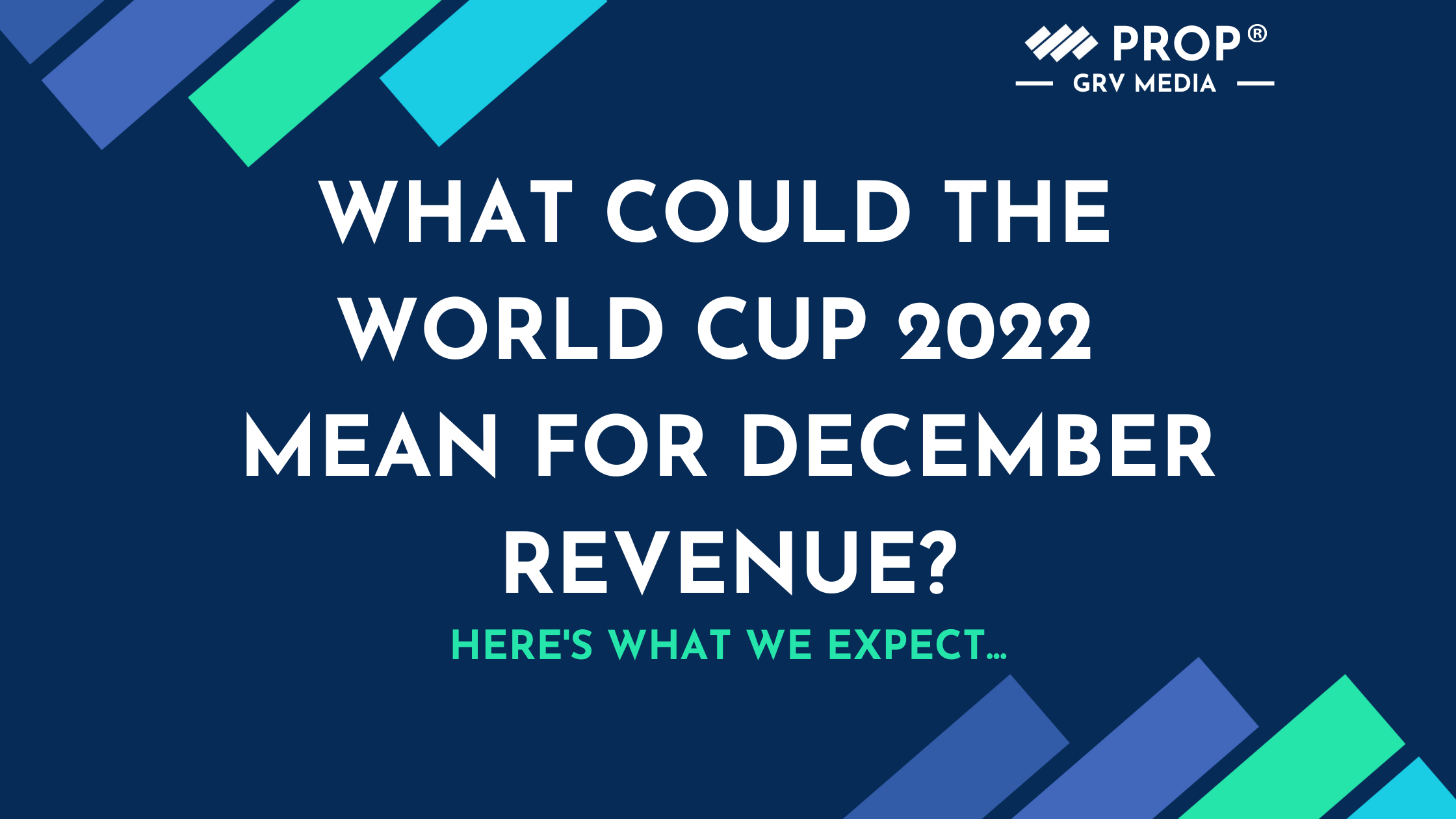This year’s World Cup tournament is proving to be a mixed bag in many different respects. Notwithstanding England’s victory over Wales earlier this week, many of the superstar favourite teams have yet to put in a strong performance. The hype and excitement that we have become accustomed to in the build up to such a tournament seemed a little more muted this time, perhaps for a number of reasons. And the same unpredictability could also be said to apply to it’s impact on digital ad revenues, as we enter the last month of the year.
The World Cup & digital ad spend
Marketers usually view the World Cup with great excitement and expectation, and it’s not hard to see why. The 2018 event in Russia drew a total TV audience of around 3.6 billion, with over 1.1 billion people watching the final live. That’s nearly 1-in-6 of all the people on the planet, doing the same thing at the same time.
This means that huge budgets are set aside to target audiences across multiple channels, with this year’s event predicted to boost global ad spend by an extra $2billion, according to leading media agency group Dentsu. And while TV airtime is one of the biggest beneficiaries of this bonanza, there’s usually a huge increase in digital ad spend too.

A digitalised World Cup
The 2022 World Cup is already undoubtedly the most digital ever. Audiences, and the brands following them, were already moving heavily towards online and streaming options in 2018. The EURO 2020 tournament (held last year in 2021, of course) was the most digital ever, with an estimated 7.5 billion digital interactions. Social media played a large part in this, with UEFA reporting nearly 400m interactions and views on social platforms for the final alone.
What might The World Cup 2022 mean for the digital ad landscape?
In spite of all of this, there are reasons to be cautious about the prospects of Qatar 2022 providing a big uplift in adspend across the board. There are several reasons for this. Firstly, this is, of course, the first World Cup to take place in the winter, which means that the usually predictable pattern of a summer revenue boost isn’t there.
In Western economies, the tournament is happening during the ‘golden quarter’ for advertising, when spend and demand are high anyway, because of Christmas and associated events like Black Friday. So, while it’s possible that RPMs for publishers will grow in December because of extra spend at a time of seasonally high demand for inventory, it could also be the case that the World Cup boost is lost amid the ‘noise’. According to AdWeek, the fact that this is the first time a major sporting event has been scheduled in Q4 may result in a less buoyant than usual outcome.
Second, the ongoing effect of global economic turmoil and uncertainty which had weakened the ad market in the months leading up to December should also be priced-in. We may see that, at best, the boost in ad spend provided by the World Cup brings this weakened demand back up to the usual levels we’d expect in December. Though it’s fairly early in the tournament, this mixed effect would appear to be present in the RPMs seen across the market to date.
Traffic to websites with football content can also be unpredictable during a World Cup tournament, with many factors at play. Greg Witham, former COO of Newsweek and aggregation platform NewsNow, says that:
“the traffic boost provided by big competitions like the EUROs and the World Cup doesn’t always follow the pattern you’d expect. Habitual visitors to club-specific sections or sites tend to go off in different directions, often to global news brands, and will engage even more heavily than usual with platforms like Twitter”.

What patterns are we seeing at GRV Media?
Here at GRV Media, we are seeing some interesting patterns emerge on our owned-and-operated football sites. Dan Coombs, GRV’s Head of Sport Content, says that:
“As with most major tournaments, the timing means there is a trade off between the increase in traffic from the competition, and the decrease resulting from the lack of club activity”.
So while media consumption increases overall (in 2018, there were 5bn World Cup-related views on YouTube, for example), many additional factors mean that it isn’t even spread.
However, Dan also notes that:
“It really helps when club players do well in World Cup matches. So, not only do we see a big growth in traffic on United in Focus when Marcus Rashford scores, but also when Bruno Fernandes scores for Portugal. By adding the run-up to the transfer window into the seasonal mix, and some domestic friendlies starting soon, December could shape up well for sports publishers”.
Our expectation is that, as the event gains traction and excitement, that December audiences and revenues will be improved YOY for publishers of all types.
